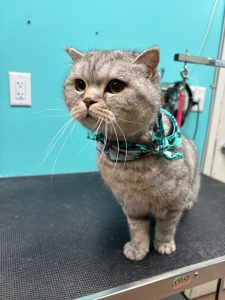
cat teeth cleaning
Brushing your cat’s teeth is a crucial part of maintaining their overall health. In this guide on how to brush your cat’s teeth, we’ll show you effective techniques to prevent dental issues and keep your feline’s smile healthy. Dental health is a critical aspect of your cat’s well-being. Just like humans, cats can develop dental problems, such as tartar buildup, gum disease, and even tooth loss. Unfortunately, these issues often go unnoticed until they’ve become severe. However, with regular brushing and the right dental care routine, you can help your feline friend maintain a healthy mouth and avoid painful dental problems. This guide will walk you through the essential steps for how to brush your cat’s teeth, offer tips on proper feline dental care, and recommend the best toothbrushes for cats.
Why Brushing Your Cat’s Teeth is Essential for Their Health
Many cat owners overlook the importance of dental care for their pets. However, dental problems can lead to severe health issues. Poor oral hygiene in cats can lead to gum disease, which, if left untreated, can cause infections, tooth loss, and even contribute to systemic health problems, such as kidney disease or heart problems. Brushing your cat’s teeth is the most effective way to prevent these issues.
Regular brushing can help eliminate harmful plaque and tartar buildup, preventing gum disease, bad breath, and tooth decay. While professional cleaning is an option, it’s an expensive procedure and not always necessary when routine home care is sufficient. Just like Dashing Dawgs Grooming & Boutique offers exceptional dog grooming services, it’s important to provide similar attention to your cat’s dental hygiene at home.
The Essential Tools for Brushing Your Cat’s Teeth
Before you start brushing your cat’s teeth, it’s essential to gather the proper tools. Using the right equipment will make the process smoother and more effective. Here are the basic items you’ll need:
The Best Toothbrushes for Brushing Your Cat’s Teeth
When choosing a toothbrush for your cat, look for one that’s specifically designed for feline teeth. A cat toothbrush typically has softer bristles, a smaller head, and a longer handle to ensure you can reach all areas of your cat’s mouth. Some toothbrushes also come in a finger brush style, allowing you to wear the brush on your finger for more control. This option is reserved for small fingers only.
The Best Toothbrushes for Kittens: Size and Comfort Considerations
If you’re introducing dental care to a kitten, it’s important to choose a toothbrush that suits their tiny mouths. Look for toothbrushes that are sized appropriately for kittens, with extra-soft bristles. This will help ensure that brushing is comfortable for your kitten and prevent any discomfort that could make them fearful of future brushing sessions.
Recommended Toothpaste for Cats: What You Need to Know
Never use human toothpaste on your cat! Human toothpaste contains fluoride, which can be toxic to cats if swallowed. Instead, choose a toothpaste made specifically for cats. These toothpastes come in various flavors that are appealing to cats, such as chicken or fish.
Choosing the Right Toothpaste for Kittens
The toothpaste you choose for your kitten should be gentle and safe for their developing teeth and gums. Most kitten-safe toothpastes are enzymatic, helping to break down plaque naturally without the need for harsh scrubbing. Again, make sure it is specifically designed for cats.
Is Human Toothpaste Safe for Cats? Why You Should Never Use It
Human toothpaste is not safe for cats due to the presence of fluoride and other chemicals. Swallowing even small amounts of human toothpaste can result in nausea, vomiting, and diarrhea in cats. Always use cat-specific toothpaste to ensure their safety and well-being.
 How to Brush Your Cat’s Teeth at Home: A Step-by-Step Guide
How to Brush Your Cat’s Teeth at Home: A Step-by-Step Guide
Brushing your cat’s teeth might seem like a daunting task, but with patience and the right technique, it can be a stress-free experience for both you and your cat. Here’s a simple, step-by-step guide to help you get started:
Step 1: Get Your Cat Comfortable with Lip Lifting
Before you even introduce the toothbrush, it’s important to get your cat used to having their mouth and gums handled. Start by gently lifting your cat’s lips over their teeth. Do this for short periods, gradually increasing the time as your cat becomes more comfortable with the sensation.
Step 2: Introduce Your Cat to the Toothbrush and Toothpaste
Once your cat is comfortable with lip lifting, it’s time to introduce the toothbrush and toothpaste. Let your cat sniff the toothpaste and the brush. You can even allow them to lick a small amount of toothpaste off your finger to get used to the taste.
Step 3: Start Brushing Slowly Techniques for a Gentle Clean
Begin brushing your cat’s teeth using small, circular motions. Gently lift your cat’s lips to expose the teeth and gums. Focus on brushing the outer surfaces of the teeth, as this is where plaque and tartar tend to accumulate. Do not force your cat to tolerate brushing if they’re resisting; take breaks and give them rewards to create a positive association with the process.
Step 4: Increase Brushing Duration and Frequency Gradually
Start by brushing for just a few seconds, and gradually increase the time to longer sessions. Aim to brush your cat’s teeth at least 2–3 times a week, but daily brushing is ideal for optimal dental health.
Step 5: Offer Praise and Rewards for a Positive Experience
Always reward your cat with treats, praise, and affection after each brushing session. This helps reinforce positive behavior and will make future brushing sessions easier for both you and your cat.
How Often Should You Brush Your Cat’s Teeth for Optimal Dental Health?
The frequency of brushing your cat’s teeth depends on their dental health. Ideally, you should brush your cat’s teeth every day to prevent plaque buildup. However, brushing 2–3 times a week can still provide significant benefits for most cats.
Brushing Frequency: How Many Times Per Week Should You Brush?
If brushing every day isn’t feasible, aim for at least 3 times per week. This frequency is sufficient to reduce plaque buildup and maintain your cat’s dental health. If your cat has a history of dental issues or if you notice bad breath or yellowing teeth, daily brushing is recommended.
What Happens If You Don’t Brush Your Cat’s Teeth Regularly?
If you neglect brushing your cat’s teeth, plaque will begin to form, leading to tartar buildup, which can eventually result in gum disease. Signs of gum disease include redness, swelling, and bleeding gums, and if left untreated, it can lead to tooth loss.
When Should You Start Brushing Your Kitten’s Teeth?
The earlier you start brushing your kitten’s teeth, the easier it will be to establish a routine. Start brushing as early as possible, ideally around 12 weeks of age, to get your kitten accustomed to the process.
Early Dental Care for Kittens: Best Practices for Starting Early
When introducing dental care to kittens, be gentle and patient. Kittens have softer teeth, so be sure to use a kitten-safe toothbrush and toothpaste. You can begin brushing their teeth once they’re comfortable with their mouth being handled.
Signs of Dental Issues in Young Cats and Kittens
If you notice that your kitten has bad breath, difficulty eating, or swollen gums, these could be signs of dental issues that need attention. Regular brushing, along with professional dental care from a veterinarian, can help prevent these problems from becoming more severe.
How Much Time Should I Spend Brushing My Cat’s Teeth?
A typical brushing session for your cat should take around 1–2 minutes. This is sufficient time to thoroughly clean all teeth and gums. Don’t forget to be super gentle. Don’t think you have to brush one tooth at a time. Just get that tiny toothbrush in there.
How Often Do You Need To Brush Your Cat’s Teeth
While it’s important to brush thoroughly, you should also be mindful of your cat’s comfort level. If your cat shows signs of stress, take a break and try again later. Over time, your cat will become more comfortable with the process. So will you!
Common Issues and Solutions When Brushing Your Cat’s Teeth for The First Time
While brushing your cat’s teeth is a necessary part of their care routine, it can come with challenges. Here are a few common issues and how to address them:
What to Do if Your Cat Resists Tooth Brushing
If your cat is resisting brushing, start slow and use positive reinforcement. Gently increase the time you spend brushing, and always reward your cat with a treat afterward. If necessary, you can try using no-anesthesia dog teeth cleaning techniques for your cat, such as dental wipes or oral gels, to help clean their teeth in a less stressful manner.
Dealing with Sensitive Gums or Teeth
If your cat has sensitive gums or teeth, use a toothbrush with soft bristles and avoid scrubbing too hard. If you notice significant discomfort, consult your vet for advice on the best approach to cleaning your cat’s teeth.
How to Keep Your Cat’s Teeth Clean Without Brushing
Brushing may not be the only way to maintain your cat’s dental health. There are several alternative options available:
Dental Chews and Toys for Cats: Do They Work?
Dental chews and toys can help remove plaque and tartar from your cat’s teeth. While they’re not a substitute for brushing, they can complement your cat’s dental routine.
Professional Dental Cleanings for Cats: When Are They Necessary?
For cats with significant dental issues, professional cleanings may be required. If you notice signs of advanced gum disease or tooth decay, it’s essential to schedule a cleaning with your vet. Professional cleanings may include a no-anesthesia dog teeth cleaning procedure for cats to ensure their safety during the process. Brushing your cat’s teeth regularly helps prevent plaque buildup. Knowing how to brush your cat’s teeth properly is the key to avoiding painful dental issues.
Maintaining Lifelong Feline Dental Health with Regular Brushing
Brushing your cat’s teeth is a crucial part of maintaining their health and preventing painful dental issues. By following the steps outlined in this guide, you can help your cat enjoy a lifetime of healthy teeth and gums. Regular brushing, along with occasional professional cleanings and dental products, will ensure your cat’s smile remains as bright and healthy as possible.
With consistency and patience, your cat will not only become accustomed to brushing but will also reap the benefits of a clean mouth, thereby preventing costly dental procedures. If you’re looking for additional help with your cat’s dental care or need grooming tips for other pets, don’t forget to check out services like dog grooming Vancouver BC, which offer specialized treatments for overall pet health.
Frequently Asked Questions About Brushing Your Cat’s Teeth
1. Can I use human toothpaste to brush my cat’s teeth?
No, you should never use human toothpaste for brushing your cat’s teeth. Human toothpaste contains fluoride, which is toxic to cats if swallowed. Always use toothpaste formulated specifically for cats. These products are safe to ingest and are designed to help break down plaque and tartar naturally.
2. How often should I brush my cat’s teeth?
Ideally, you should brush your cat’s teeth daily to maintain optimal dental health. However, brushing 2–3 times a week is the minimum recommended to prevent plaque buildup and dental disease. If your cat has a history of dental issues, more frequent brushing may be necessary.
3. What are the signs that my cat needs dental cleaning?
Signs that your cat may need a professional dental cleaning include bad breath, yellow or brown plaque buildup on their teeth, swollen or bleeding gums, difficulty eating, and excessive drooling. If you notice any of these symptoms, it’s best to consult with a veterinarian for further evaluation and possible cleaning.
4. How can I clean my cat’s teeth naturally without brushing?
If brushing isn’t an option for your cat, there are alternatives. Dental chews, toys, and special dental wipes can help remove plaque and tartar buildup. You can also feed your cat dry food that promotes dental health. Additionally, professional services like no-anesthesia dog teeth cleaning may be an option for maintaining your cat’s oral hygiene without the need for brushing.
5. What should I do if my cat resists tooth brushing?
It’s common for cats to resist tooth brushing initially. Start slowly by getting them used to having their lips lifted and gradually introduce the toothbrush. Use positive reinforcement, such as treats and praise, to reward your cat. If resistance continues, you can try alternative methods like dental wipes or consult with a vet for tips on handling the situation.
6. Is it too late to start brushing my adult cat’s teeth?
It’s never too late to start brushing your cat’s teeth. While it may take some time for your cat to get used to the process, consistent brushing will still help reduce plaque and tartar buildup. If your cat has significant dental issues, consult with a veterinarian first to ensure they don’t require professional cleaning before starting a regular brushing routine.
7. Can brushing my cat’s teeth prevent dental disease?
Yes, regular brushing can significantly reduce the risk of dental diseases such as gingivitis, periodontal disease, and tooth loss. By removing plaque and preventing tartar buildup, brushing helps keep your cat’s teeth and gums healthy. Combine brushing with professional cleanings for the best results.
8. Are there alternatives to brushing my cat’s teeth?
If brushing isn’t an option, there are other ways to maintain your cat’s oral health. Dental chews, specialized cat foods, and toys designed to clean teeth can help. No-anesthesia dog teeth cleaning services are also available for pets who need professional care but don’t tolerate sedation.
9. How do I know if my kitten’s teeth are developing properly?
Kittens start teething at around 3–4 months of age. You should check for signs of normal teething, such as the shedding of baby teeth and the appearance of permanent teeth. If your kitten is having difficulty eating, showing signs of pain, or has unusually bad breath, consult your veterinarian to check for any dental issues.










